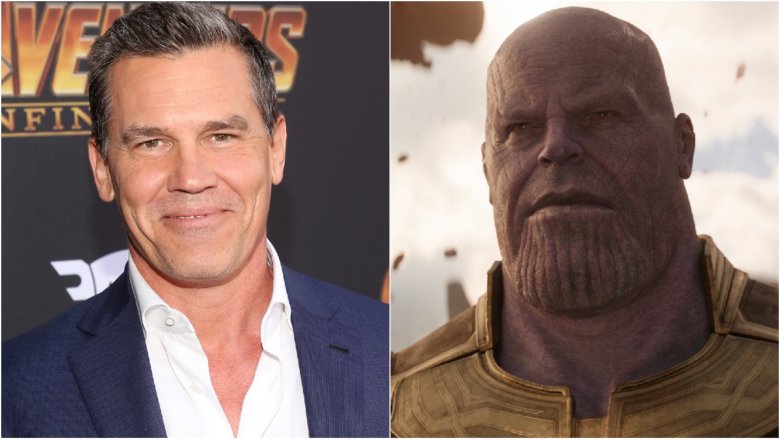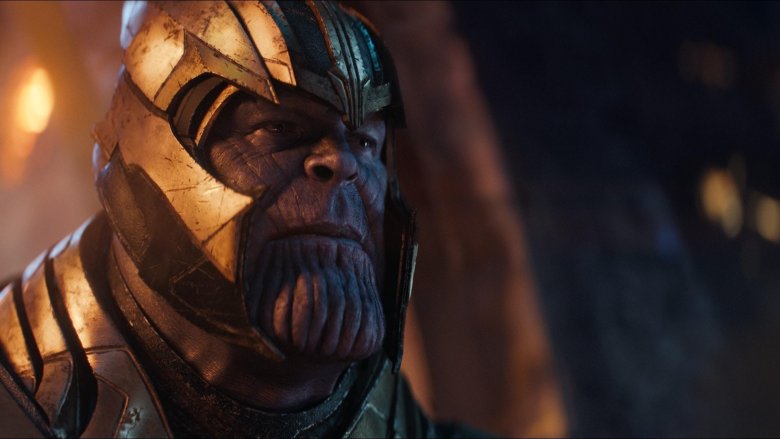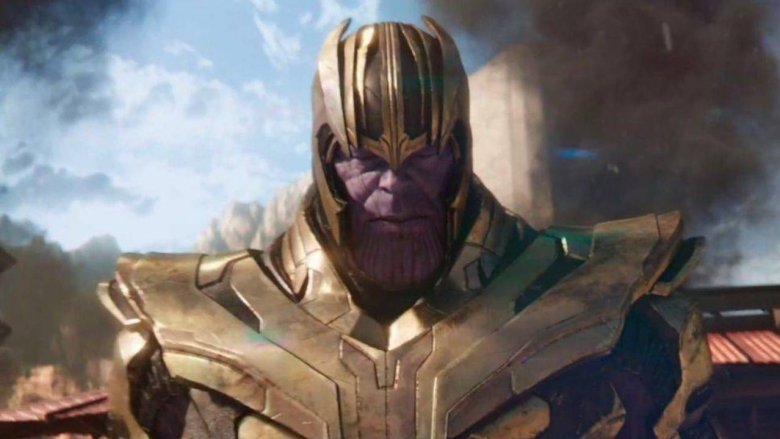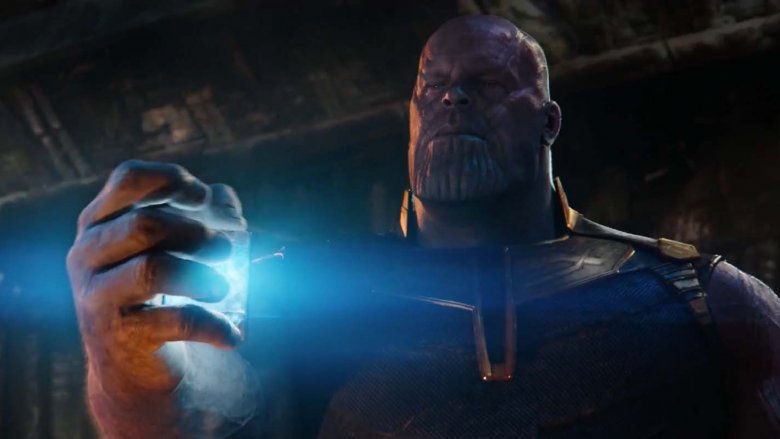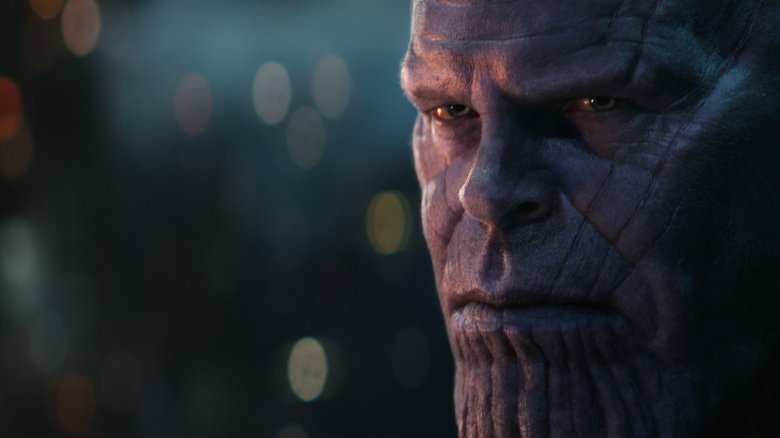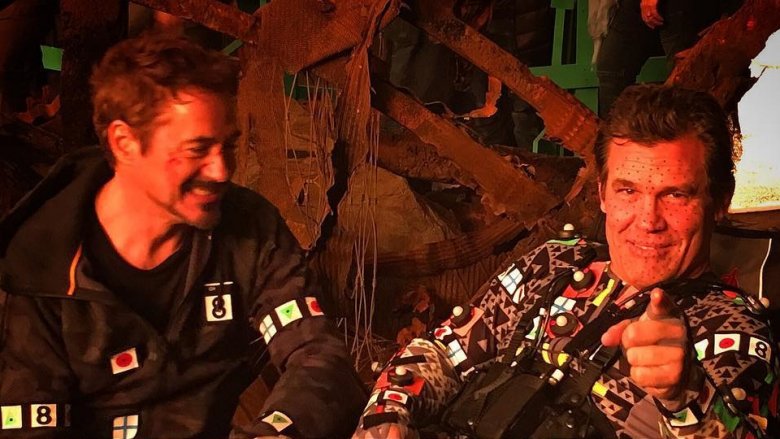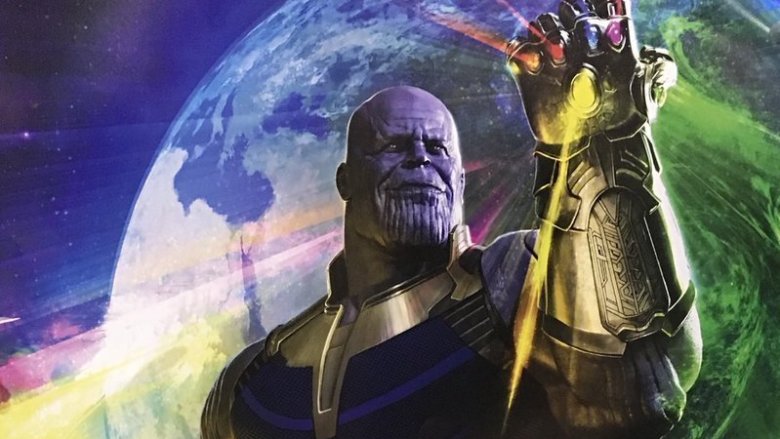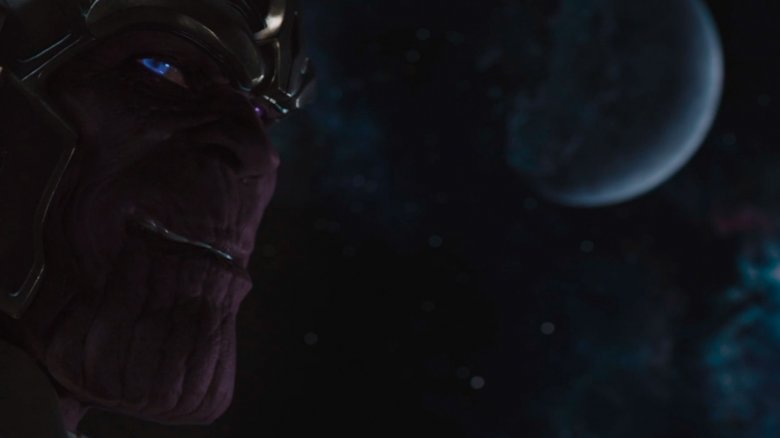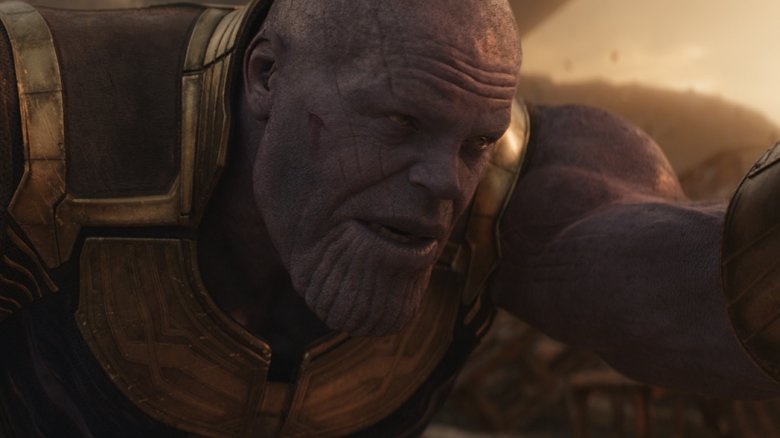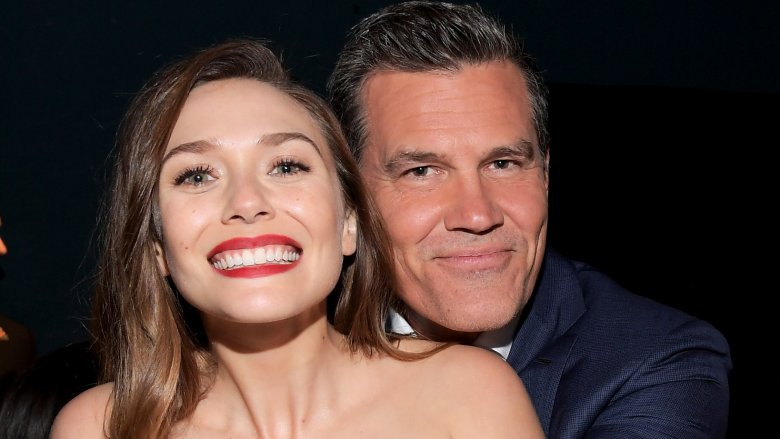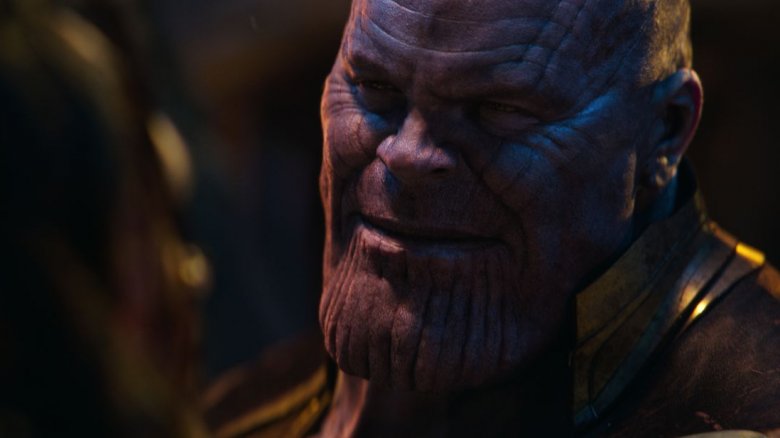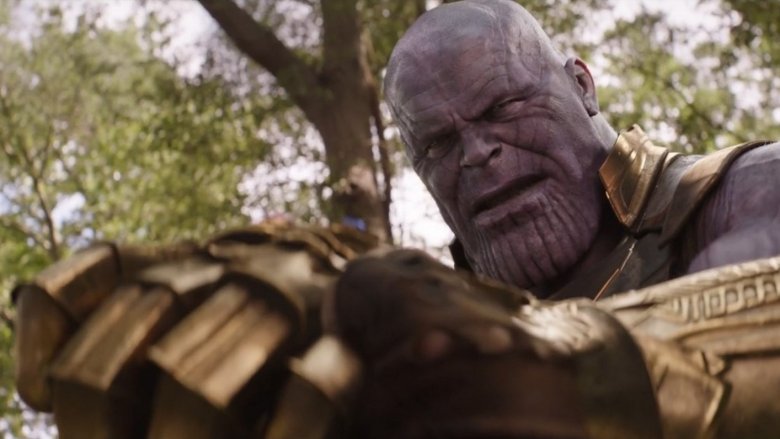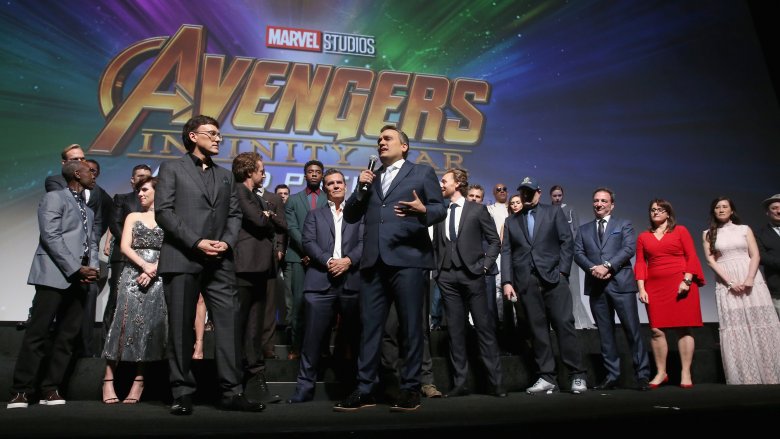How Infinity War Transformed Josh Brolin Into Thanos
Avengers: Infinity War's Thanos is one of the scariest, most effective villains to come out of the Marvel Cinematic Universe. From his psychotically logical plan to his unpredictable penchant for mercy, he's a villain with layers. Even fans familiar with the comics were surprised by his portrayal. Who would have thought the giant purple space monster would end up being so... human?
Josh Brolin played the role of the Mad Titan Thanos expertly, bringing the character to life with a mixture of pathos and panache. Making it all the more impressive, the role is 100% CGI. Brolin's motion-capture performance was barely half the battle — after his work was recorded, an army of special effects artists had to painstakingly create Thanos on top of him, frame by frame.
The scale of the task really makes you appreciate the efforts of everyone involved — after all, that gross chin was all some artists got to see for months. Was all the hard work worth it? The end result speaks for itself. By now, just about everyone on the planet has gotten a look at the final product, so let's take a deep dive into how Infinity War turned Josh Brolin into Thanos.
Matters of scale
Any fan dedicated to sticking around for post-credits scenes knows how much of an endurance test it's become. You basically get about 15 solid minutes to hash things out with your fellow moviegoers — or go to the bathroom, get the car warmed up, make a few phone calls, etc. That whole time, the bulk of the credits are given over to tipping the hat to hundreds of people across dozens of different visual effects companies that all had a small part in bringing a blockbuster to life.
According to the visual effects supervisor Kelly Port, whose company Digital Domain worked on creating Thanos for Infinity War, the number of people it takes to complete a major studio movie's visual effects has exploded in recent decades. Marvel's own Iron Man 3, for instance, has over 1,800 people credited in its visual effects department alone — a dramatic step up from the special effects-heavy blockbusters of decades past.
"We were reflecting back on Titanic days, the late '90s, where a big effects film would be considered around 300 shots," Port said. "Whereas [Infinity War], in contrast, has over 3,000 visual effects shots."
Seg • men • ta • tion
So how does a production go about taking on the gargantuan task of making a modern-day blockbuster? It's surprisingly similar to the way anyone accomplishes a big project: Proper planning, division of labor, and wise allocation of resources.
For a modern blockbuster, work is contracted out to a number of different visual effects studios located around the world, all supervised remotely by Marvel. Speaking in an interview with Art of VFX, Marvels Studios' overall VFX supervisor Dan DeLeeuw gave some insight into the amount of work that goes into a movie's visual effects before anyone's even powered on their editing rig.
"This movie wasn't grounded like Winter Soldier or Civil War," DeLeeuw said. "It involved eight to ten foot tall aliens and battles on other planets. We knew the movie was going to be massive and had to plan accordingly."
The company's plan, according to DeLeeuw, involved "[dividing up] the movie into individual sequences that would be awarded to separate VFX houses. Each house would get a sequence that would tell a complete narrative. This way each house could maintain the look and feel of the sequence while minimizing the need for shared shots."
Digital dash
For Infinity War, the majority of the Thanos sequences went to a company called Digital Domain, who took on a workload of 513 shots amounting to over 40 minutes of screen time. Their work involved bringing Thanos to life in every scene except the one on Titan, a sequence which was instead handled by WETA Digital.
While you might not have heard of the studios by name before, you're certainly familiar with their work. WETA is the studio behind The Lord of the Rings' Gollum and the new Planet of the Apes movies' Caesar, while Digital Domain has had a say in recognizable movies going back to James Cameron's True Lies in 1994.
Founded by Cameron and acclaimed special effects artist Stan Winston, Digital Domain has been working on large-scale superhero movies since the genre kicked off with X-Men in 2000, and have since had a hand in making the first Thor, the third Iron Man, Spider-Man: Homecoming, and Thor: Ragnarok with Marvel Studios.
Even with the team's extensive experience, it took over 340 people from the company nearly two years to bring just most of Thanos' parts to fruition, which really puts things into perspective when it comes to how much pure labor it takes to make movies of this scale work.
Artists assemble
Speaking in an interview with The Verge, Digital Domain's Kelly Port gave some insight into the vital preparatory stages of their VFX work, which starts with taking the screenplay and imagining what it would take to bring scripted sequences to life.
The expected special effects shots are then put together in a rough previsualized form — crude computer animation, cut into sequence, that allows filmmakers to get a rough idea of what the effects team will be trying to accomplish with the final product. (You can sometimes later find these pre-vis sequences as a bonus feature for a film's home media release.)
Once the filmmakers have an idea of the special effects shots they'll be getting from the VFX studios, they can begin to plan live-action shoots around these needs. For Infinity War, the first priority was making sure Thanos worked.
To that end, directors Anthony and Joe Russo met with Brolin and the digital effects artists several months before live shooting began, to both see what Marvel wanted to accomplish with the character, and also to determine what the effects companies would be capable of turning in.
Port said it was a proud moment to show off Digital Domain's first Thanos test to Brolin and the directors on the actor's first day of shooting. "They were all very excited about it," he said. "And I think there was a collective sigh of relief that we could pull this off."
Keep it casual
The results of Digital Domain's first test were extremely encouraging for all parties, showing that the company's artists were capable of maintaining a large degree of Brolin's humanity as they encased his performance in a digital skin.
"The early test [showed] how much we could do with the character," DeLeeuw, the overall effects supervisor, later said. "It showed that would could take exactly what Brolin did on stage and reproduce it with the CG character."
The degree of verisimilitude the effects team was able to achieve with the test put Brolin at ease, letting the actor know he didn't need to oversell his performance to make the character feel alive.
"I think what was really great about his reaction was his sense that he did not, as an actor, need to overplay the acting," said Digital Domain's Kelly Port. "When we did this test, he was doing it as a pretty casual conversation. He wasn't trying to push it over the top for technical reasons, like, 'Maybe if I push it over the top, it won't get filtered as much, and what I'm trying to do will come through.'"
Seeing that the effects team would be able to effectively translate a lower-key Thanos performance in all of its subtleties was a boon to the filmmakers — especially Brolin, who could then move forward assured that he could keep his performance more restrained.
Infinite anxiety
In the lead-up to Avengers: Infinity War, no one was more nervous about bringing Thanos to life than the man behind Thanos himself, Josh Brolin. Playing the Mad Titan wasn't a necessarily physically demanding task (especially since he had already gotten ripped for the purposes of a live-action performance in Deadpool 2), but it was emotionally draining.
"I was more nervous doing that than I've been for a long time," Brolin said of his Thanos performance in the years before Infinity War's release. "I was sitting in front of 32 cameras and my face was sprayed with iridescent paint and all that. It was very, very different, but I like it. It's fun. It's different."
While shooting the movie, Brolin at times found himself adrift, unable to reconcile the story he was trying to tell with his ridiculous real-life circumstances.
"I thought, 'What the f— am I doing here?'" he said, looking back on the process after the shooting was through. "Because you're in a onesie, man. You've got to walk around in a onesie and imagine yourself as an actor with some impact."
"I'm Josh, who's got dots on him, and a onesie, and a helmet-cam," Brolin continued, setting the scene. "And I've got Scarlett right there, and I've got Brie, and Don Cheadle, and Hemsworth, and Chris Evans, and Downey... I'm sitting there and I'm looking like I look, which is not 700 pounds, and purple, and eight feet tall."
Mo-cap it
With a VFX direction agreed upon and the work divided up between many studios, the production went off to shoot its live-action sequences, with Brolin performing on set in a motion-capture suit.
According to Port, the production cleverly installed Brolin's mo-cap cameras in and around the sets of the movie, allowing other actors more space to share with him and interact. The movements of his body were recorded by those cameras surrounding him, while his facial movements were recorded by HD cameras that were attached to a helmet and pointed back at his face.
All of the photographed elements, meticulously timecoded, were then put into a massive database, with every minute movement of Brolin's face being used for reference when it came time to replace his features with the computer-generated Thanos model.
"We look at the result; you look at Brolin side by side with Thanos," Port said. "Is he conveying the same emotional expression? Is he conveying the same emotion with his face? And we make a subjective call."
Copy and paste
One of the more interesting hurdles to overcome in bringing Thanos to life wasn't making sure that he looked like Josh Brolin, but rather making sure that he looked like... well, himself.
Fans of the MCU have been anticipating Thanos' arrival ever since the end of 2012's The Avengers, when the big purple space monster first turned to the camera with a sinister, foreshadowing grin. This was years before Brolin was ever cast or considered for the part in Infinity War, so how did the pre-existing Thanos from prior movies fit into the character's final form?
According to Port, the Digital Domain team started their Thanos' modeling with the old look, and slowly incorporated Brolin's features. There was no magic to the process — just a protracted back and forth between their teams and Marvel.
"There's a balance to be had between Brolin and the historical Thanos character, for sure," Port said. "And we tried to find that balance, but we did introduce more of Brolin I think than in previous Thanoses in the films."
Their efforts (and WETA's) were not immediately met with enthusiasm. Upon the release of the first footage of Brolin as Thanos, many fans criticized the new look, finding that too much had changed between the initial and final versions. But while the Infinity War Thanos model may be less purple than people were used to, he does look a lot more real than the versions that came before.
The hardest part
The most difficult aspect of bringing Thanos to life had to do with his quiet, reflective moments. While an effects-heavy battle scene has lots of moving parts from a VFX perspective, it's also easier to cut corners when the screen is so busy with meteors, explosions, and Spider-Man quips to register every little flaw.
In other words, it's not that hard to make the purple space man fight the green Hulk man. It's much harder to make you believe the purple space man can cry.
"The most complicated sequence was the scene that takes place on Vormir where Thanos sacrifices Gamora," Port said, speaking with Art of VFX. "Many of the shots of Thanos in this sequence are very close and very emotional, so it was extremely important that Brolin's performance come through for this scene."
The importance of nailing Thanos' ability to physically convey emotion can't be overstated. One false move, and the filmmakers fall directly into the uncanny valley. Suddenly, you're taken out of the story, distracted by the effects. Once you remember you're looking at a cartoon, you're basically just watching Jar-Jar Binks cry — and there's nothing engrossing about that.
Read up
While the idea of getting into such a pivotal mo-cap role was daunting, Brolin has since gone on to call Thanos "one of the most favorite jobs I've ever had."
Part of getting into the character involved immersing himself in nearly 50 years' worth of Marvel Comics history. Of course, Marvel Studios didn't just send Brolin to the local comic book shop with a gift card on a Wednesday.
"They sent me over this bible, just all this information," Brolin said. "It was a massive thing, and yet even that was maybe a sixteenth of what there was to learn."
As anyone who's ever read comic books is well aware, the internal consistency of the characters and their stories can sometimes be a nightmare, especially as characters mutate across decades beneath the pens of different writers.
"The comic book and Marvel world is not only extremely emotional to people, but so in-depth," the actor continued. "There's no way to learn it all. But you try to do what you can, like with any role, and you want to earn your place on set. I started reading and I was in awe."
Good eyesight
One of the most important elements to get right in creating a computer-generated character is the eyes. The cliche goes that eyes are windows to the soul, which is really just a way of saying they convey subtlety. They squint or widen to show fear, shock, or focus, conveying emotion through tiny microexpressions — and when it comes to a monstrously evil figure like Thanos, seeing those emotions can make all the difference.
"Even though he's despicable on so many levels, there's a part of Thanos that is very empathetic," said Anthony Russo, the movie's co-director. "He has a very complex inner life, and he's not all bad. Josh is a performer who's capable of delivering that kind of complexity, where you have that level of violence in him, but at the same time you have that level of sensitivity."
All of that would be for nothing if Digital Domain proved incapable of mapping Brolin's face onto a monster, but the studio was fortunately up to the task.
"What we really focus on is the eyes at Digital Domain, and there's a ton of work, and a huge amount of detail around that," said Port. The company, he added, doesn't treat the eye as one object, but rather as layers of intersecting objects — eyelids, conjunctiva, and the thin layers of the eyeball itself. All of this goes a long way toward making Thanos feel like a real person — and that realism, in turn, makes him so much scarier.
Tinting the lights
Another one of the tricky parts of animating a CGI character has to do with making the audience believe the character actually exists on the same plane as real actors. The most important element to focus on in this aspect is lighting. According to Port, speaking to The Verge, "If the lighting is not good, it won't look photoreal."
Obviously, a CGI character starts off being lit by nothing — it exists in a digital plane, untouched by sunlight. When the character is placed into real-world footage that is saturated with a certain kind of lighting, a lack of similar lighting on the CGI model will look absolutely disastrous.
"As we began to experiment with lighting ideas, we soon discovered that Thanos looked his best with slightly more complex lighting with various colors rather than monochromatic light," Port said in an interview with Art of VFX.
Many of the scenes Digital Domain was tasked with took place in darker settings, on spaceships or stormy planets, giving the team some flexibility when it came to lighting Thanos' skin. For the scene when Thanos arrives on Earth in broad daylight, they had to contend with making him look like he was being lit as the same sunshine as the performers — which isn't as simple.
"[We] found that having Thanos walk through the dappled light of the trees was very effective for integrating him into the shot and giving him depth," Port said.
Two years later
All the hard work came to a head when Infinity War finally saw release, garnering an almost surprising degree of critical acclaim and making box office history. For fans, the movie's release was the culmination of years of patient waiting. For the effects artists behind the adventure, it was a chance to finally let audiences see what they'd been up to after two years of nonstop work.
"The excitement of the audience's reaction seeing the film for the first time was really, really cool for me," Port said, during an interview conducted after the movie's release. "We do it for the love of the craft, but we also do it for the love of entertaining. The reception from the audience is so rewarding. It means a lot."
Of course, for many of the behind the scenes creators, the work didn't end with the release of Avengers: Infinity War. After all, there's still a whole other movie to complete before the story's over, and even with the Infinity Gauntlet on his arm, Thanos can't animate himself.
